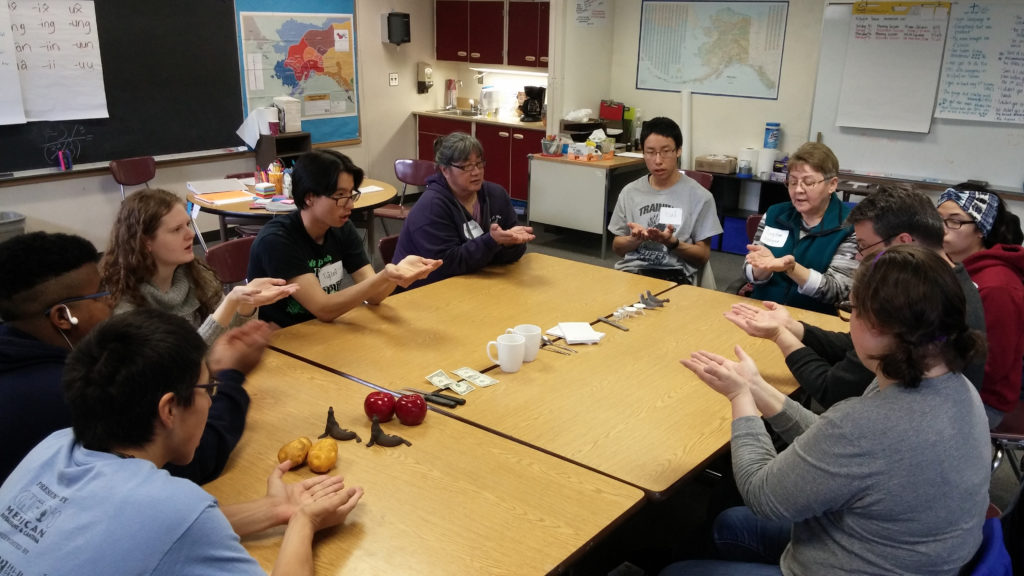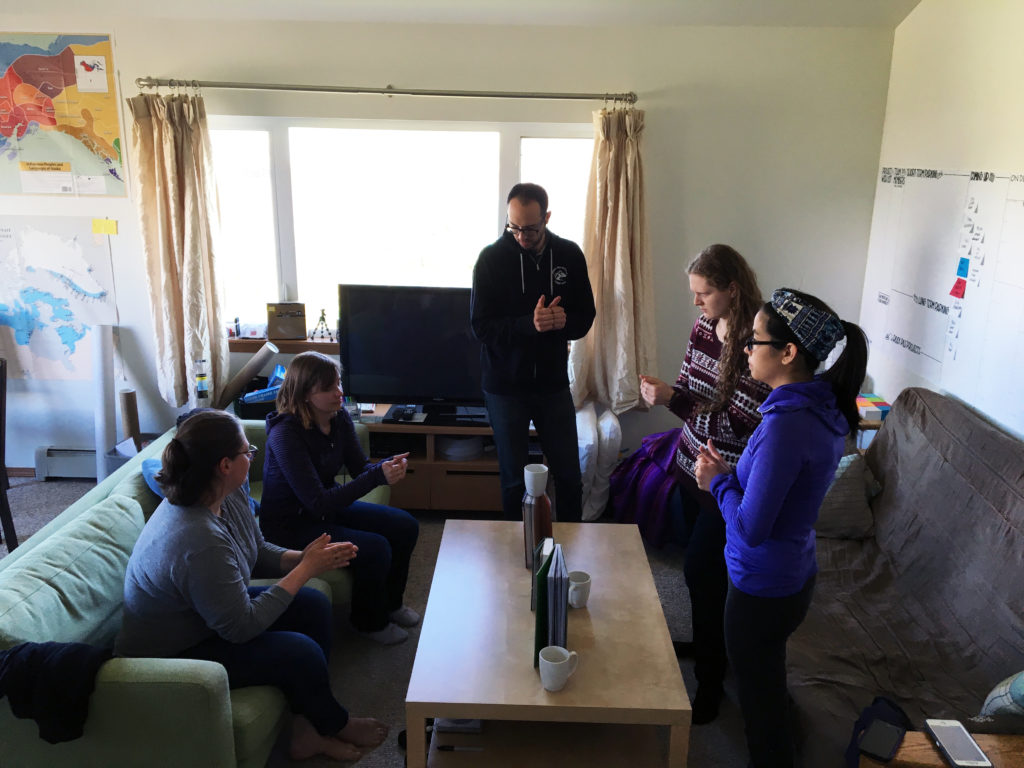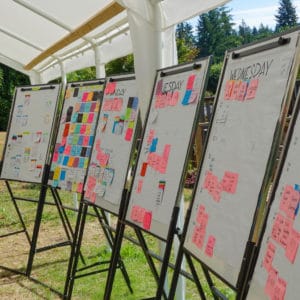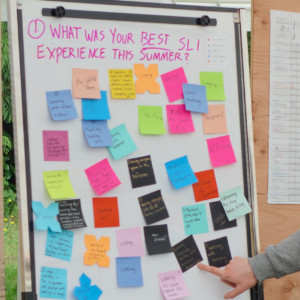 Perhaps one of the most common questions I have had about Where Are Your Keys is about Sign Language and why we use it so much for language learning. Some people look at WAYK and assume that all we’re doing is adding hand signs to vocabulary in another language and then going around in a circle asking questions. In actuality, Sign Language is only one of many Techniques that we use for language learning, it just happens to be the first Technique that most people notice.
Perhaps one of the most common questions I have had about Where Are Your Keys is about Sign Language and why we use it so much for language learning. Some people look at WAYK and assume that all we’re doing is adding hand signs to vocabulary in another language and then going around in a circle asking questions. In actuality, Sign Language is only one of many Techniques that we use for language learning, it just happens to be the first Technique that most people notice.
So why is there so much Sign Language in WAYK? Part of why Sign Language is so conspicuous is that we use it for two very important purposes. The first is that we attach signs to words or ideas that we are acquiring from the target language. This idea was inspired by a language teaching method called Total Physical Response. In a nutshell, TPR pairs language with physical actions, which makes the language easier to remember. An action or gesture helps trigger the word in your mind, because it is very clearly associated with that concept. WAYK takes this idea to the extreme, by connecting already established signs (in an existing language: American Sign Language) with words and ideas in the target language.
Associating ASL signs with words in another language helps in two major ways. First, it serves as a memory trigger for the target language. If we forget something in the target language we can use the sign to cue another person to give us the word rather than breaking the immersion bubble to verbally ask for what we need. For example, if I am trying to ask for an apple from someone and I forget the word, rather than needing to stop and use English to say “apple” or ask “How do you say apple again?”, I can throw a sign and my conversation partner will help me by supplying the word for me.
Conversely, if I lose my train of thought or forget a word, my Angels can throw a sign at me to remind me of what I was trying to say without needing to interrupt. The immersion bubble stays intact—no English necessary. It is surprising how much time is saved by just throwing a sign as a cue for help rather than laboriously trying to figure out how to ask for a word, all without forgetting what you were trying to say in the first place!

One of the things that we try to do in WAYK as much as possible is create immersion environments, a.k.a. an “immersion bubble.” The Techniques we use help us remain in the target language for as long as possible so that we spend less time talking about the language and more time IN the language. We therefore, as much as possible, avoid direct translations of the Target language, Niiĝuĝim Tunuu, into our dominant language, English (TQ: Spare the Fairies!). Sign language helps us here too. If we attach a sign to a Niiĝuĝim Tunuu word, it helps us catch a concept for something without immediately attaching an English equivalent in our brains. Basically, even if it cannot completely silence our English brain, Sign Language puts English at least one step removed from the language that we are learning.
The second major way we use sign language is as a way to discretely signal WAYK Techniques. As I said before, signing is just one of many Techniques that WAYK uses to facilitate language learning. There are actually a LOT of Techniques, approximately 300 some odd techniques I am told, (I have only learned a handful so far) and the list is still expanding as we encounter new, helpful tactics. Not all techniques have specific signs, however many of the common ones do. In the same way that we can use signs to cue a word we are forgetting, signing a technique cues someone to change their behavior in some way. Is someone speaking too softly? Use the sign for TQ: Speak Up to cue the person to speak louder. Not sure if you are saying a word correctly? You can sign that you are Mumbling and your conversation partner knows you are aware of the fact that you aren’t saying it accurately. Or you can ask for an Accent Adjustment to get your partner to help you improve your pronunciation. The beauty of the system is that it is both clear and discrete, so it doesn’t pop the immersion bubble.
It is surprising how much I have started to rely on these signed techniques after such a short period of time! A particular issue I have found myself experiencing lately is speaking too quietly. I have a tendency, as many people do, to speak more and more softly when I am unsure if what I am saying is correct. This is a pretty normal response, unfortunately, it is not terribly helpful if you speak so quietly that no one can hear you. This is especially important if your fluent speakers are elders—if they can’t hear you, they can’t help you improve. However, stopping me mid-thought over and over to tell me to speak up can be frustrating for all participants involved. Using the sign for TQ: Speak Up is clear way of signaling that I am starting to get a little too quiet without having to interrupt over and over again (I am getting better at it now, I swear!).
Even in my short time in Atka, I have definitely noticed that the signs are helping me learn Niiĝuĝim Tunuu. After only a few weeks of lessons, I have already noticed that when I do a sign, whether I am trying to cue myself or not, my brain is starting to whisper to me with Niiĝuĝim Tunuu words rather than English. I will be curious to test how tightly tied the signs will be tied to Niiĝuĝim Tunuu by the end of the summer.
Post authored by Erin.




